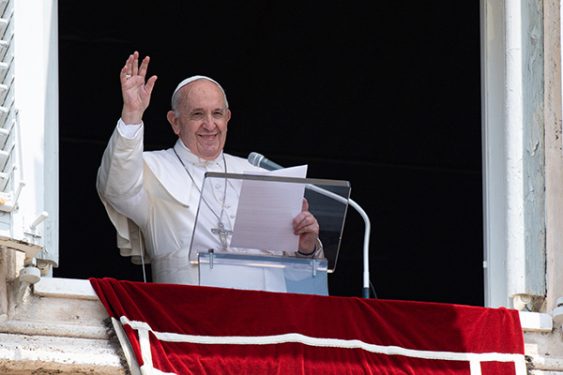WINDSOR TERRACE — As the world prays for Pope Francis to enjoy a full recovery following his colon surgery, doctors are busy explaining symptomatic stenotic diverticulitis, the condition afflicting the 84-year-old pontiff.
According to the Vatican press office, Pope Francis’ post-operative recovery is proceeding normally. Within two days of undergoing the surgery July 4 in Gemelli Hospital in Rome, the pontiff was able to get out of bed for a walk and eat breakfast.
[Related: Gemelli Hospital Is Known as ‘Go-To Health Facility’ For Popes]
Dr. Robert Tiballi, an infectious disease expert with the Catholic Medical Association, said what the pontiff suffers from is fairly common, particularly in older adults. “These days, as we age, our bowels do get weaker and the incidence of diverticular disease increases,” Tiballi said.

The pontiff’s surgery was elective, meaning that it was planned in advance and was not the result of a visit to the emergency room. The medical situation is giving the public the chance to learn more about symptomatic stenotic diverticulitis.
Stenosis is a narrowing of the colon, which is a large bowel. The symptoms include abdominal pain, something Pope Francis was likely experiencing, Tiballi said.
“What it appears to be is that the pope was suffering from recurrent diverticulitis, which is an inflammation of pouchings in the bowel called diverticulosis. When you get infected in that area, it can cause scar tissue development,” Tiballi said.
Diverticulosis doesn’t cause major problems for the vast majority of people who have it, other than occasional blood in the stool. But between 10% and 15% of people with diverticulosis wind up in the hospital.
Tiballi explained that the bowel wall is made up of three walls — an inner shiny surface, a muscular layer, and then another muscular layer. With diverticulosis, the inner lining permeates through the muscle walls and forms a balloon-like structure that pops out of the bowel wall, forming an irregular cobblestoning on the outside of the bowel which can become filled with non-digestible food material such as cucumber, tomato seeds, or popcorn. And that can lead to infection.
This condition often develops over time as a person ages, Tiballi said.
The operation doctors perform to address it, in which doctors cut the near end and far end of the colon, remove the affected section and then sew the near and far ends back together, is also common.
“If you’re a senior citizen and you mix with other senior citizens, it’s likely that someone you know has had this type of procedure,” Tiballi said.
But while the procedure has become fairly routine, it is not a minor operation, doctors said.
“This is a major operation,” Dr. Walter Longo, chief of colon and rectal surgery at Yale University School of Medicine, told The Tablet. “So as with any big operation, you want to make sure a patient’s heart and lungs are recovering and progressing the way they should after something like this.”
The key thing to watch for, Longo told The Tablet, is that the two cut ends of the colon that surgeons stitched back together remain attached.
Colon ailments can usually be detected with a colonoscopy, Tiballi said. “When people reach age 50, they should be getting a colonoscopy,” he said.
How to reduce the risk of getting diverticulitis? Tiballi recommends eating a balanced diet. “Eating a diet that’s balanced and it has some fiber in it is very helpful. You don’t want to eat a diet without any vegetables. That can cause constipation,” he said.
Tiballi was struck by the fact that Pope Francis ate breakfast so soon after the operation. “From what I read this morning he was given a solid food meal, which is pretty impressive,” he said.
There might have been another reason for the quick return of the Holy Father’s appetite, Tiballi said. “The food in Italy is much better than it is here in the United States. So I’m sure he was interested in eating solid food right away.”
